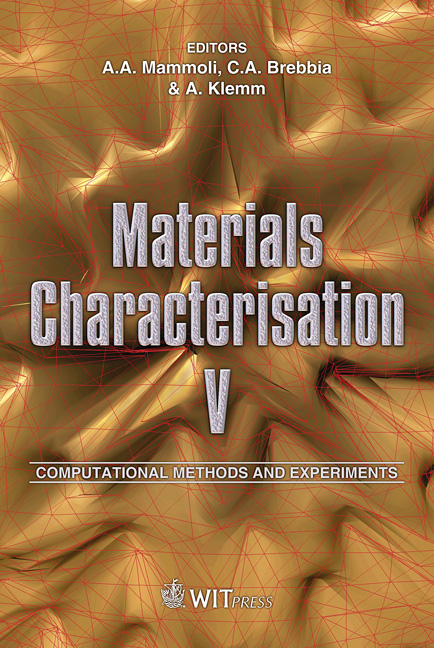Modelling Of Load Transfer Between Porous Matrix And Short Fibres In Ceramic Matrix Composites
Price
Free (open access)
Transaction
Volume
72
Pages
10
Page Range
165 - 174
Published
2011
Size
973 kb
Paper DOI
10.2495/MC110151
Copyright
WIT Press
Author(s)
J. G. P. Silva, D. Hotza, R. Janssen & H. A. Al-Qureshi
Abstract
The aim of this work is to present a model of load transfer between porous matrix and short fibres in ceramic matrix composites. This analysis is based on the earlier shear-lag models used for polymeric composites. However, geometry and strength of fibres in addition to the matrix porosity are included in the present analysis. The theoretical curves for the longitudinal and shear stresses distributions along the fibre-porous matrix interface are presented. They exhibited a maximum strength point at the middle of the short fibres. It became evident that the critical length is governed by the relative properties of the fibres, matrix and porosity, which greatly influenced the load carrying capacity of the fibres in the composites. In addition, the present simplified solution facilitates the understanding of the interface mechanism using porous matrix. Keywords: modelling, ceramic matrix composites, shear-lag models, porous ceramics. 1 Introduction Modern structural ceramic composites possess a number of unique properties that cannot be achieved by other materials. Therefore, they have a potential for saving energy, reducing wear, and increasing the lifetime of components [1]. However, regardless of their remarkable properties, structural ceramics are not as widely used in industry as they should and could be. Among the reasons for the reluctance of industry to introduce structural ceramic as components are [1]: • high price of ceramic parts, • insufficient knowledge in \“traditional” metal-oriented engineering,
Keywords
modelling, ceramic matrix composites, shear-lag models, porous ceramics





